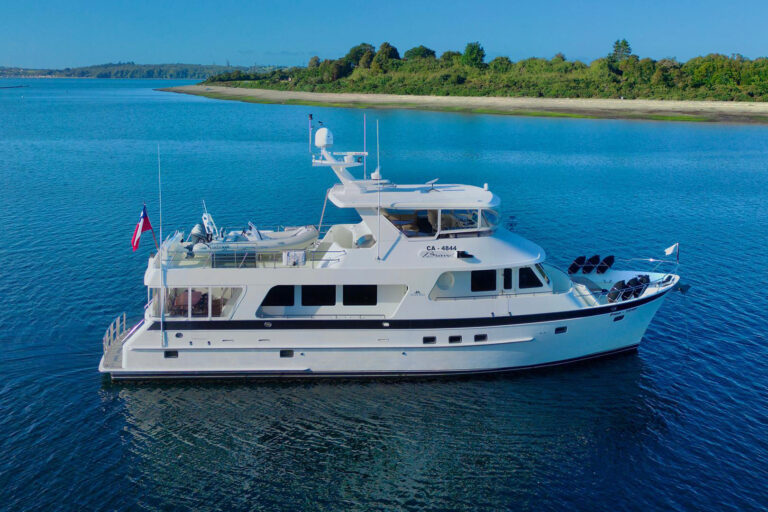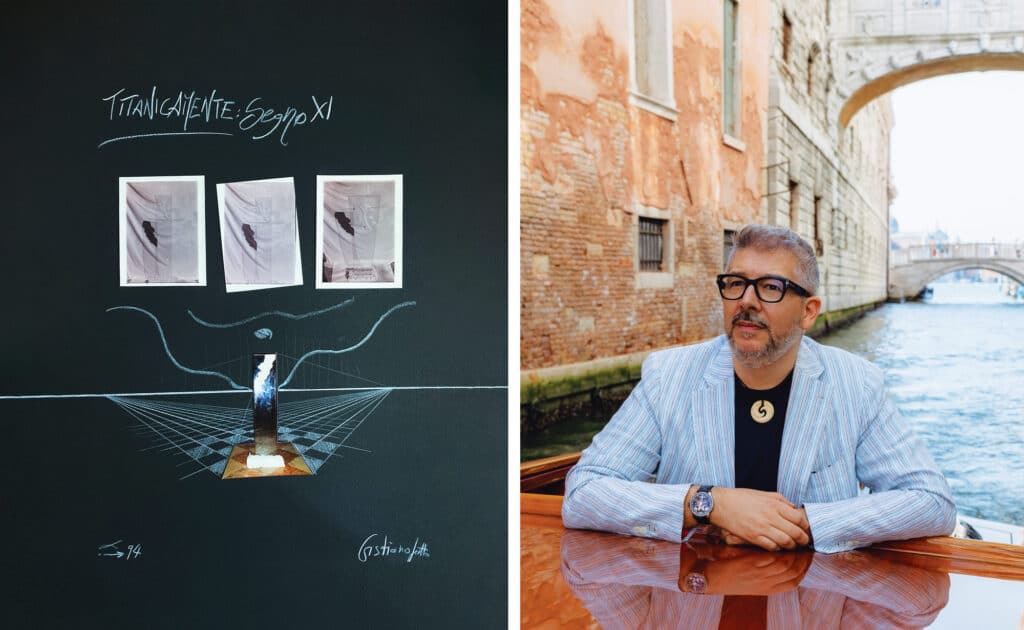
Some yacht designers trace their passion for their profession back to art school. For Cristiano Gatto, it all started with puzzles for kids.
Gatto vividly remembers his parents completing books of crossword puzzles when he was 3 or 4 years old. He also recalls sections for kids in those books, with dots with numbers to connect, creating a design. “I was passionate about that because from nothing I was able to design,” he says. “And still today, I think I’m doing the same things.”
For Gatto, creating a yacht’s exterior lines, designing salons and staterooms, and fashioning furnishings all starts with an idea. “I’m just connecting thoughts,” he says. “Like a miracle, the design comes up.”
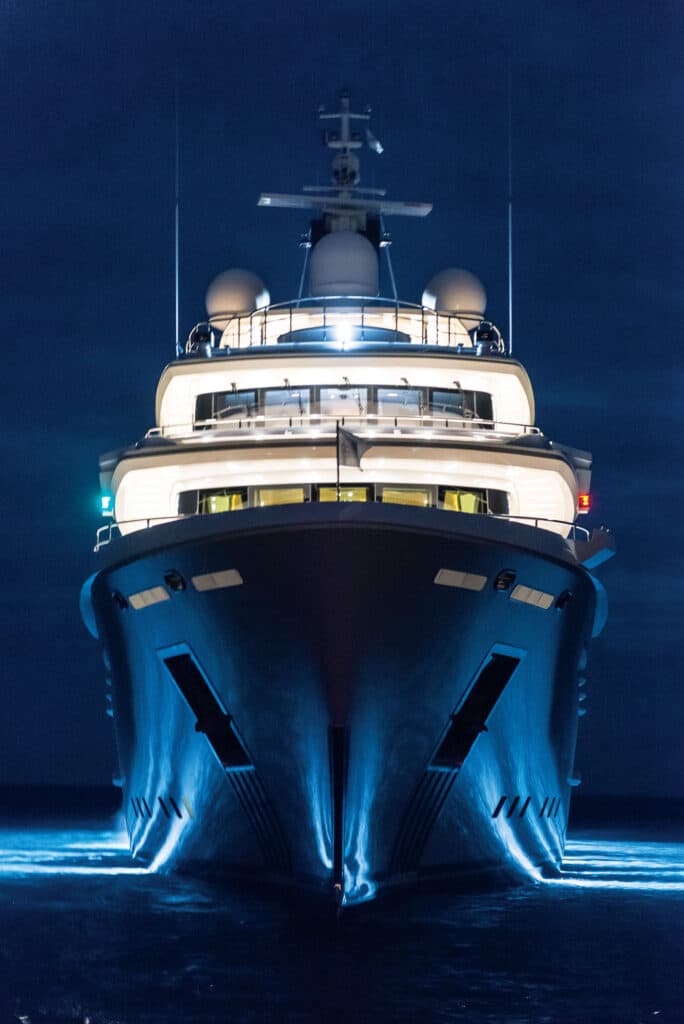
With his eponymous studio’s headquarters and his team near Venice, Italy, Gatto has contributed to more than 200 yachts, with a few dozen yachts and residences in the works. Whether it’s a penthouse apartment, a 180-foot superyacht, or specialty lighting for foyers on land and at sea, imagination is at the heart of each contract. “When you are young, you have the idea that everything is possible, and you can do whatever you want in a different way,” Gatto says. “We still have hope for new ideas, and that is the most important part of my job today.”
Growing up in Venice, Gatto was influenced by the thousands of years of history reflected in the architecture. The same is true of boats plying the city’s 100-plus canals. The designer also says he was always fascinated with colors and graphics. The way design involved hues and shapes especially caught his attention. “It was the only thing that I was good at doing in school,” he says.
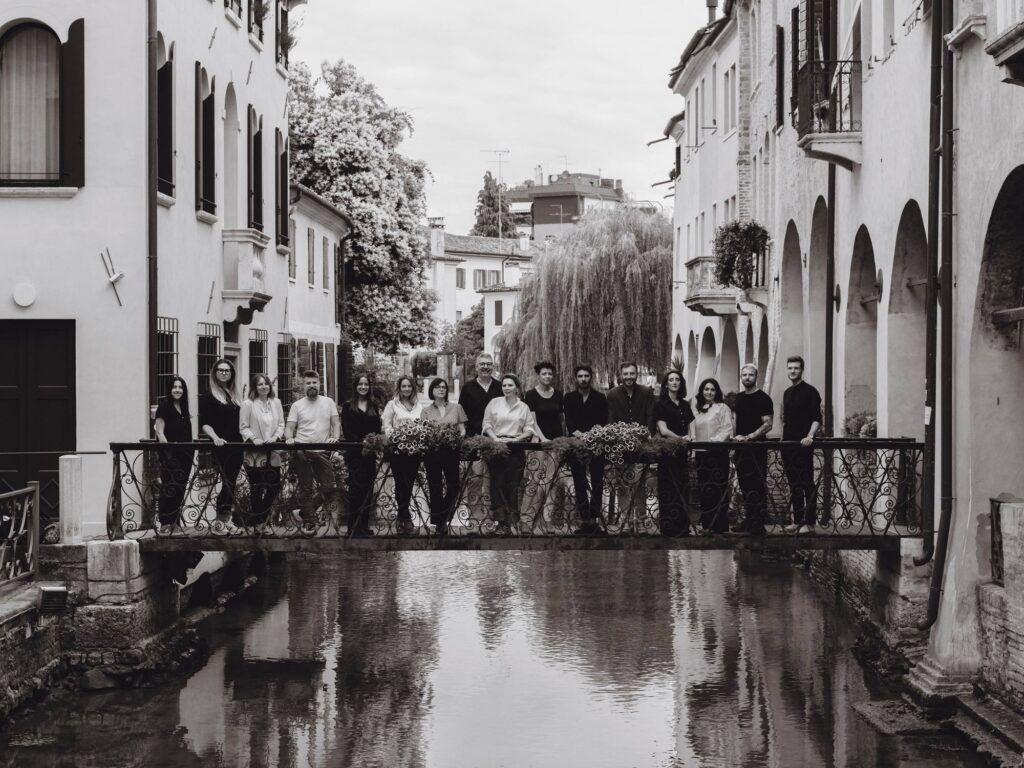
After enrolling in the Academy of Fine Arts in Venice (he graduated in 1993), “everything was about sketching, designing, colors and materials,” Gatto recalls. He specialized in sculpture, “trying to build up things that my mind was trying to create for the first time.” Still to this day, Gatto says yacht design and sculpture are largely the same things. While sculptures are made of different materials, they all begin with creating a mold, and then painting and finishing the object after it’s removed from the mold.
“The exterior-design process is very, very similar,” he says. “In my opinion, it’s even more so because you’re building a space. There is a bit of theatricality to any material, and you work with perceptions, volume, space, lights. When you do sculpture, you do a very similar exercise. I don’t see big differences between them.”
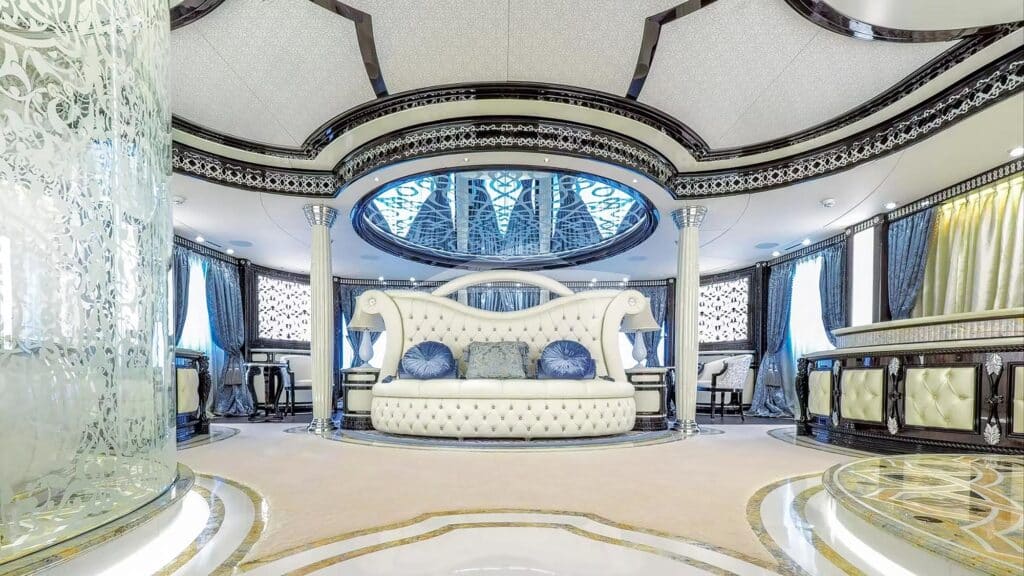
A prime example of Gatto’s sculpture in superyacht design is Crazy Me, a Heesen from 2013. To say the custom 164-footer was—and remains—daringly different is an understatement. Complementing Gary Grant Design’s avant-garde exterior styling, Gatto worked with the owner to execute a contemporary ambience emphasizing geometry and volume, along with fine materials. Arguably, the pièce de résistance is the central guest stairway. Made of glass and polished steel, it has cantilevered, bamboo-treaded steps that illuminate from within to augment the sensation of light, which is already significant because of large overhead curving windows along the decks. A skylight further illuminates the staircase.
When asked what he considers the more successful projects in his 22 years of heading his own studio, Gatto says, “Sometimes I joke and say, ‘The next one.’” He quickly adds, “Some of the projects that I have in my memory maybe are not the most known, but it’s more the people whom I work with who teach me something, or an experience. They make the project become so special. And frankly, for different reasons, there are many different projects that I have this connection with.”
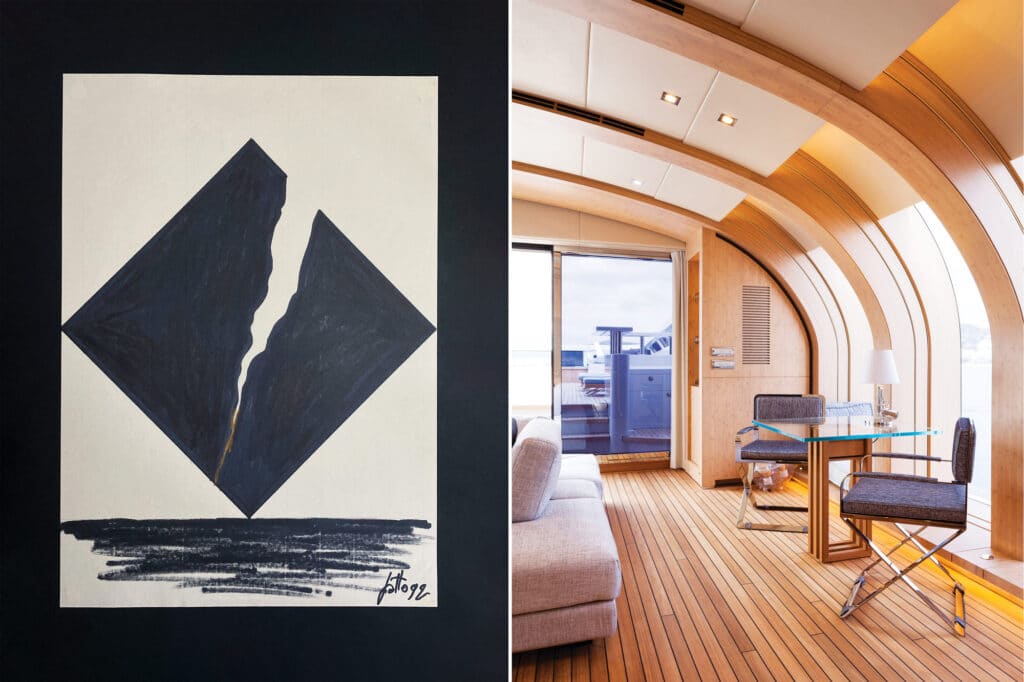
The owner of the expedition yacht I Nova, a 164-footer also from 2013, certainly fits the bill. Gatto’s studio handled styling and interior design for this ice-class custom yacht, built by Greece-based Cosmo Explorer. At the time, Gatto was contemplating luxury versions of research vessels and showing the concepts to clients. He had a model of a luxury expedition vessel on hand when a client entered his studio. Gatto recalls: “He looked at me and said, ‘What is that ugly boat?’ And I said, ‘I have this idea to have all the toys on board and to be able to circumnavigate the world.’ So, I was looking to create a boat that’s not really a yacht for fashion, but more to live aboard and visit the different areas of the planet. And he said, ‘I like the idea,’ and from that moment, we started to sketch and design it, and then build it.”
For someone who says his studio started from “minus three—not zero, but minus three, because we had a lot of ideas but not a lot of experience”—Gatto has come a long way. Just as when he was 3 years old, he connects the dots between owners’ visions and what’s possible, while respecting the engineering and build teams as well as the crew who need to live and work on board. To him, owners want unicity, the quality of being unique. “Any experience with any clients in reality is unique; it’s a subjective aspiration,” he says. “You know your job is not to produce an object that is equal for thousands of people.”

Singular Sensation
“The boats that we design are tailor-made,” Cristiano Gatto says. “Each person is different, so the identity or personality—or unicity—is important in a world where everything is multiplied, where we have a thousand of everything.”
Land and Sea
Beyond yacht design, Gatto’s clients seek out his team’s expertise for luxury homes. Gatto is collaborating with a few clients who have residences in Miami and is designing a palace (his third) in Dubai. A number of his residential clients are also yachting customers, requesting similar looks and feels on land.
Superyachts and Sculpture
Gatto sees a deep connection between yachts and sculpture. “When you make a sculpture, normally people are walking around the object,” he says. “In this case, people are walking inside the space, but you can consider any object [like a door handle] a micro sculpture. In reality, it’s the work of micro and macro.”
Take the next step: cristianogattodesign.com






